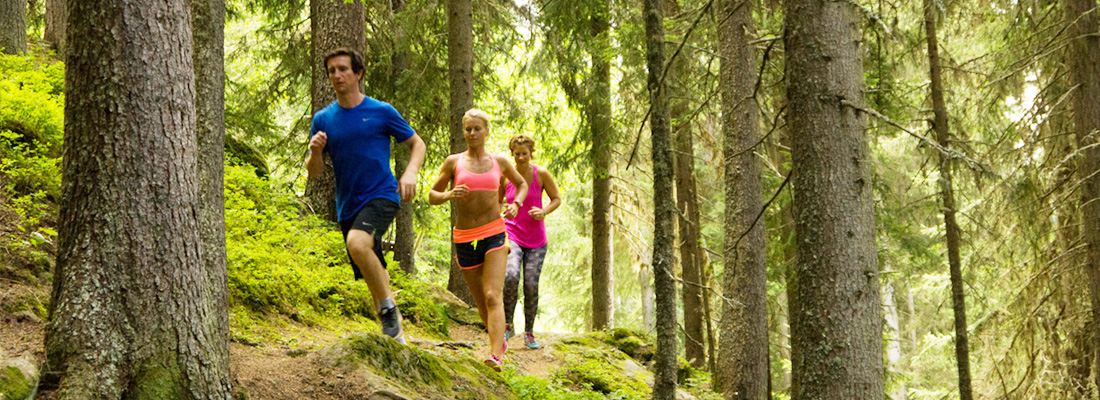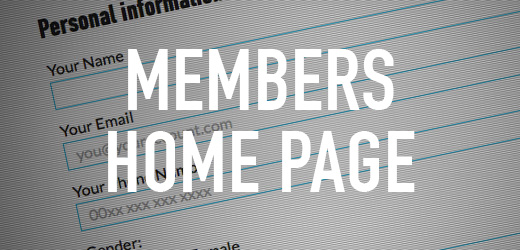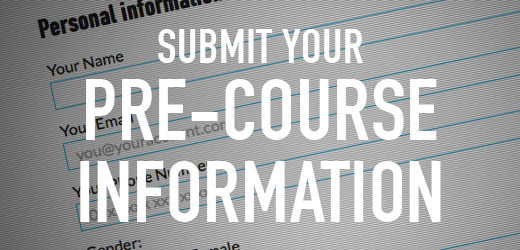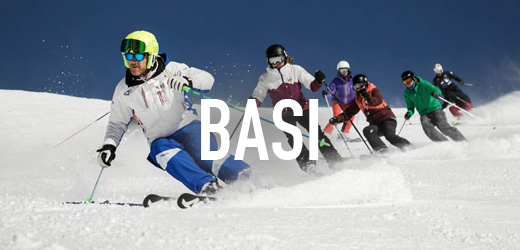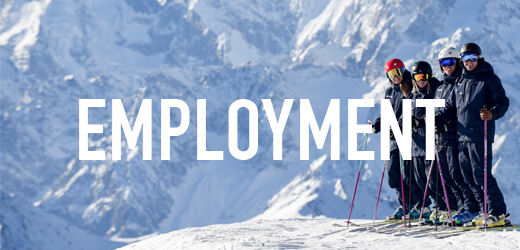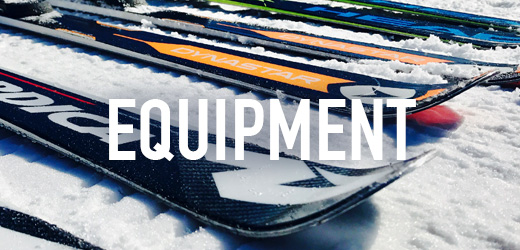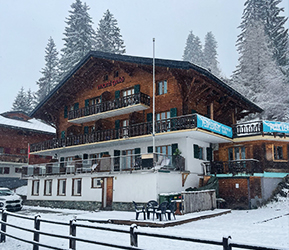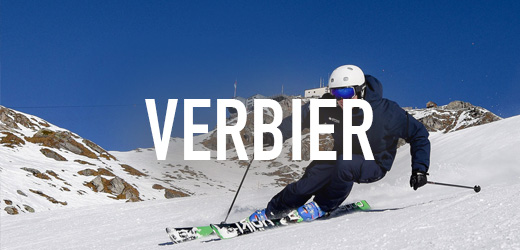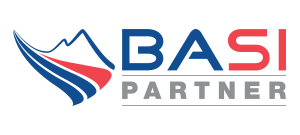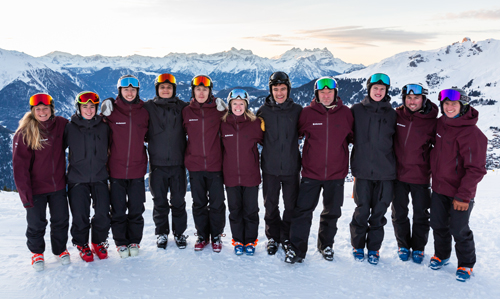FITNESS
Welcome to the Fitness area.
Our bodies are amazing machines and by training them in the right way we can improve our fitness, strength and power.
If you are fitter, stronger and more powerful you will get more from each on snow training session. This will help you improve your skiing faster.
You do not have to spend a lot of time training to get results. Physical training is not a complicated process and it won’t take lots of time. It’s simple and just requires imagination and a bit of dedication.
Training also has many other benefits. If you are fitter and stronger you are less likely to get sick or injured and maximise your skiing potential, plus it’s an excellent mood booster!
YOUR 8 WEEK FITNESS PLAN
Below is a simple guide to making a quick and effective training programme split into three different levels that you work through over time …
Everyone should start at Level 1 and progress through the different levels over the two months before your course starts.
If you already have a very strong base fitness level then you could start at Level 2, and do Level 2 and 3 for 4 weeks each.
You should try and start this programme 8 weeks before the start of the course and aim for 40 minutes of focused effort 3 times per week – this is easily enough to make a big difference …
LEVEL 1
IMPROVE FITNESS(2 WEEKS)
First, it is vital to build a solid aerobic base that will provide a good platform for the next stages.
You probably do a lot of these activities already. Examples include running, swimming and cycling.
LEVEL 2
BUILD STRENGTH(4 WEEKS)
Strength is key to skiing. To ski a difficult line in the bumps or hold a high speed carved turn you will need to be strong.
We are not talking about who can bench or squat the most weight here.
What we are talking about is total body strength. Upper body, lower body and core strength.
You should spend at least 4 weeks on this stage before progressing to power
LEVEL 3
BOOST POWER(2 WEEKS)
Power is strength at speed. Power exercises are high intensity moves that will also improve your balance, co-ordination and agility. Perfect for skiing!
Power is exactly what you need in skiing when you need to change direction rapidly or adjust for different snow.
LEVEL 1
IMPROVE FITNESS(2 WEEKS)
- A solid aerobic base will provide a great platform for the next stages.
- You probably do a lot of these activities already.
- Examples include running, swimming and cycling.
Here are some suggestions of distances and times to aim for:
Running
Distance 5km
Time
This should take between 25-30 minutes.
If there is lots of climbing on your route it might take a bit longer.
Aim to keep on running the whole time.
Swimming
Distance
750m (20 lengths of a 25m pool).
Time
Between 15-20 minutes
Aim to keep swimming the whole time.
Cycling
Distance 20km
This should take between 40-50 mins.
Again, this depends on the route selected and if you are cycling outdoors on a road bike or indoors on a stationary bike.
These are only suggestions – if you do other aerobic sports like rowing, tennis or football, then great.
Do them often and build your fitness this way.
Skipping is also a great way of building aerobic fitness. It also helps with co-ordination, balance and agility. Perfect for skiing!
So, buy a skipping rope if you can …
LEVEL 2
BUILD STRENGTH(4 WEEKS)
- Strength is key to skiing
- To ski a difficult line in the bumps or hold a high speed carved turn you will need to be strong
- We are not talking about who can bench or squat the most weight here…
- We are talking about total body strength: Upper body, lower body and core strength
- You should spend at least 4 weeks on this stage before progressing to power
- Always begin each session with a dynamic warm up and end with a few cool down stretches
- To help you make an exercise routine I have made some Instagram videos (below)
- They have demos of each exercise with explanations
- To start attempt the simple versions of each exercise
- But as you improve add the different variations to your work out
WORKOUT PLAN: STRENGTH
DYNAMIC WARM UP
A dynamic warm up before exercise is essential. 👊 Basically ‘the warm up’ prepares you both physically and mentally for the upcoming challenges of a workout so doing one is vital.
Start slowly and focus first on your lower body, then your upper body and then try more complex, total body moves. Try these warm up exercises with ten repetitions of each …
Lower body:
1️⃣ Slow high knees – focus on core and legs
2️⃣ Butt taps – focus on hamstrings, glutes and quads
3️⃣ Leg swings – opposite hand to foot – both legs – focus on balance, & coordination
Upper body:
4️⃣ Arm swings – rotate both ways – mobilise shoulders
5️⃣ Arm wrap – squeeze shoulder blades together, arms back round body – focus on chest and back
6️⃣ Arm rotation – hands out as if holding ball, keep chest pointing forward, rotate around spine
Complex moves:
7️⃣ Opposite hand lunge – focus on core, lower body and coordination
8️⃣ Crawl out then back into low squat, push up through heels (start with feet wide)
SKIPPING VARIATIONS
Skipping is a great total body workout for aerobic fitness, strength endurance and coordination.
To challenge yourself more add in some variations:
1️⃣ Basic jumps
2️⃣ Single leg jumps (each leg)
3️⃣ Jogging on spot
4️⃣ Cross overs
10 reps of each … keep it going for at least two minutes! 👌
SQUAT VARIATIONS
Squats are the go to compound leg exercise. They work your calves, quadriceps, hamstrings, glutes and core. 👌 Different variations have added benefits too. All fitness routine should include squats, or squat variations, to build leg strength, core stability and improve aerobic fitness. 🏋️♀️ As well as being an amazing exercise squats can be done almost anywhere. All you need is your body and enough room to squat! Here are some variations with both front and side views:
1️⃣ & 2️⃣ Basic bodyweight squat
3️⃣ & 4️⃣ Jump squat
5️⃣ & 6️⃣ Weighted squat
PUSH-UP VARIATIONS
Press ups, or push ups, are one of the most simple but effective exercises at our disposal. They work you shoulders, chest, core, triceps, back and legs.
Start with a rigid plank. Your arms should be fully extended, with your hands, elbows, and shoulders all in line. Your feet should be no more than 12 inches apart—the closer together, the more difficult the push-up, because it requires more core activation for stability. 💪
You can bend your elbows out to the side in a T formation, which fires up your pecs, or keep them tucked in along your rib cage, which uses the triceps more. Try these variations 20 reps each with 1 min rest between sets:
1️⃣ Classic
2️⃣ Shoulder taps
3️⃣ Wide hands
4️⃣ Single leg
As always good technique is way more imporant than rep count 🏋️♂️
LUNGES VARIATIONS
Lunges are an excellent easy-to-learn, safe and incredibly effective exercise. They should be part of any strength or power workout. Lunges target your quadriceps, hamstrings, glutes and improve core stability. A strong core will improve your posture, balance and coordination. Strong legs and a strong core are vital for all sports and especially skiing! ⛷ Lunges are really versatile and can be done pretty much anywhere. 💪 In these simple variations I’ve added gym weights but if you don’t have these improvise! Aim for 45s exercise and 30s rest …
1️⃣ & 2️⃣ Basic lunge – straight & side on
3️⃣Jump lunge
4️⃣ Lunge with weight above head
5️⃣ Lunge with rotation using weight
MOUNTAIN CLIMBERS
Mountain Climbers are a go to total body exercise.
If done well they will rapidly improve fitness, strength co-ordination and agility. 💪
Start in a traditional plank, shoulders over hands and weight on just your toes.
With your core engaged, bring one knee forward under your chest, with the toes just off the ground. Return to your basic plank. Switch legs.
Once you’ve mastered each variation try 1 min of each with 1 min rest in between:
1️⃣ Mountain Climbers
2️⃣ Spider-man crawls
3️⃣ Cross body Mountain Climbers
4️⃣ Combo – Mountain climbers with press up and burpee
CORE
Core training is key to developing a strong and healthy body. A strong core also helps prevent injuries and allows your body to move more effectively. 🏃♂️ Here are some basic moves to try:
1️⃣ Reverse mountain climbers
2️⃣ Side plank with rotation
3️⃣ Leg raises
LOWER ABS
Having a strong core is central to total body health. Literally.
These muscles act to stabilise your spine providing firm support for all the activities we do. 🤸♂️
A strong core isn’t just about a ‘six pack’ – it encompasses your entire torso – everything but your arms and legs. 💥
Increased core strength will lead to better performance in sports of your choice, improve balance and decrease the risk of injury. 🏋️♂️
When lying on your back ensure you have correct form. Draw your lower abs in, pressing your lower back into the floor. Cycle though each exercise 30s on 10s rest. When you do this well increase the intervals to 1 min on, 20s off.
Try these variations:
1️⃣ Scissors
2️⃣ Crossovers
3️⃣ Single leg raise, double leg raise
4️⃣ Hip raise with leg extension
PLANK VARIATIONS
Planks are an awesome exercise … they strengthen muscles most obviously in your core but also in your back and shoulders.
A stronger core will increase your athletic performance, improve your posture and lower the risk of back pain. 👌
Once you’ve learnt the correct technique they are simple to do and should be added to any routine.
The first video is me doing a basic plank with a wooden dowl on my back to show how my hips and ears are kept at the same height.
Add in side planks to work your obliques, and make these harder with rotations to work even more muscles in your arms and back.
Finally shoulder taps are a great variation to test all of these plus balance and coordination!
Try these out:
1️⃣ Basic planks – wooden dowel to show correct form – aim for 45s hold
2️⃣ Side plank – 30s each side
3️⃣ Side plank with rotation – 5 each side
4️⃣ Straight arm plank with shoulder taps – keep even tempo – aim for 20 each side
You should still include one aerobic workout (Level 1) in your weekly workout routine to keep it varied.
LEVEL 3
BOOST POWER(2 WEEKS)
- Power is strength at speed. Power is what you want when you need to suddenly make a difficult turn or adjust for different snow in the off-piste.
- Power is the stage where exercising gets really interesting
- Exercises are more varied, involve more moves and each session can be more focused on improving individual area
- You do not have to spend a lot of time each day training to get results. 40mins of focused effort 3 times per week is easily enough
- Always begin each session with a dynamic warm up and end with a few cool down stretches
- To help you make an exercise routine I have made Instagram videos
- These have demos of each exercise with explanations below
- To start attempt the simple versions but as you improve add the different variations to your work out
WORKOUT PLAN: POWER
DYNAMIC WARM UP
A dynamic warm up before exercise is essential. 👊 Basically ‘the warm up’ prepares you both physically and mentally for the upcoming challenges of a workout so doing one is vital.
Start slowly and focus first on your lower body, then your upper body and then try more complex, total body moves. Try these warm up exercises with ten repetitions of each …
Lower body:
1️⃣ Slow high knees – focus on core and legs
2️⃣ Butt taps – focus on hamstrings, glutes and quads
3️⃣ Leg swings – opposite hand to foot – both legs – focus on balance, & coordination
Upper body:
4️⃣ Arm swings – rotate both ways – mobilise shoulders
5️⃣ Arm wrap – squeeze shoulder blades together, arms back round body – focus on chest and back
6️⃣ Arm rotation – hands out as if holding ball, keep chest pointing forward, rotate around spine
Complex moves:
7️⃣ Opposite hand lunge – focus on core, lower body and coordination
8️⃣ Crawl out then back into low squat, push up through heels (start with feet wide)
For more info on why a warm up is so important check out my blog – link in bio 🏋️♂️
SKIPPING VARIATIONS
Skipping is a great total body workout for aerobic fitness, strength endurance and coordination. To challenge yourself more add in some variations:
1️⃣ Basic jumps
2️⃣ Single leg jumps (each leg)
3️⃣ Jogging on spot
4️⃣ Cross overs
10 reps of each … keep it going for at least two minutes! 👌
BURPEES
Nobody likes burpees but I urge you to embrace them! 💪
They are one of the best total body workouts available. You only need limited space, your body and the right mindset to get started.
Burpees are excellent for building strength and power and to keep them interesting you can add loads of different moves to make them even more challenging. 👊
As always form is very important, make sure you brace your core to ensure that your hips do not sink below your body.
Practice the correct move and then add speed.
Try 10 repetitions of each …
1️⃣ Classic burpee
2️⃣ Add star jump and push up
3️⃣ One leg (do both sides)
4️⃣ Add lateral jump
BOUNDING
Bounding is an awesome way to build strength and explosive power … and it’s really fun! 💥 Find some obstacles and set a course.
To challenge yourself have a go at these:
1️⃣ Diagonal jumps
2️⃣ Lateral jumps
3️⃣ Rotational jumps
KB SWINGS
Kettlebells are an excellent training tool, they burn fat and build muscle. 💪
They develop your posterior chain – notably hamstrings, glutes and calves.
A strong posterior chain reduce knee injuries and enable you to run faster and become more powerful.
Correct form and technique are important to protect your lower back.
Here are some kettlebell swing variations:
1️⃣ Basic swings
2️⃣ Alternate hand swings
3️⃣ Over head swings
4️⃣ One arm swing
Try rounds of 10 reps and remember to do both arms for the last one ☝️
ASSAULT COURSE
High altitude fitness training is a brilliant way to get fitter and stronger. 💪
Your body will adapt to the thinner air at altitude and increase your metabolic rate. It’s tough though!
🏋️♂️ This mini course combines:
1️⃣ Slalom sprints
2️⃣ Pushups x 5
3️⃣ Agility later
4️⃣ Burpees x 5
5️⃣ Basic jumps
6️⃣ Kettle bell swings x 5
7️⃣ Sprint to finish
An intense 58 seconds at 2200m altitude!
LOWER ABS
Having a strong core is central to total body health. Literally.
These muscles act to stabilise your spine providing firm support for all the activities we do. 🤸♂️
A strong core isn’t just about a ‘six pack’ – it encompasses your entire torso – everything but your arms and legs. 💥
Increased core strength will lead to better performance in sports of your choice, improve balance and decrease the risk of injury. 🏋️♂️
When lying on your back ensure you have correct form. Draw your lower abs in, pressing your lower back into the floor.
Cycle though each exercise 30s on 10s rest. When you do this well increase the intervals to 1 min on, 20s off.
Try these variations:
1️⃣ Scissors
2️⃣ Crossovers
3️⃣ Single leg raise, double leg raise
4️⃣ Hip raise with leg extension
PLANK VARIATIONS
Planks are an awesome exercise … they strengthen muscles most obviously in your core but also in your back and shoulders.
A stronger core will increase your athletic performance, improve your posture and lower the risk of back pain. 👌
Once you’ve learnt the correct technique they are simple to do and should be added to any routine.
The first video is me doing a basic plank with a wooden dowl on my back to show how my hips and ears are kept at the same height.
Add in side planks to work your obliques, and make these harder with rotations to work even more muscles in your arms and back.
Finally shoulder taps are a great variation to test all of these plus balance and coordination!
Try these out:
1️⃣ Basic planks – wooden dowel to show correct form – aim for 45s hold
2️⃣ Side plank – 30s each side
3️⃣ Side plank with rotation – 5 each side
4️⃣ Straight arm plank with shoulder taps – keep even tempo – aim for 20 each side
For some of the exercises above you require equipment.
If you have access to some, great. But if not you, can improvise.
For example, use large water bottles instead of Kettlebells.
You should still include one aerobic workout in your weekly routine to keep it varied.
Also include one strength session at least once per week.
For blogs and more exercise information check out my website www.trainwithjake.co.uk or contact me on WhatsApp +41 797 159 017
